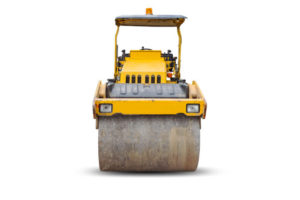Construction insurance specialists say their insurance market is strong with plenty of capacity and underwriters competing for the best accounts.
According to specialists interviewed by Insurance Journal for their assessment of the market, the boom in the construction business has allowed underwriters to refine their appetites and be more selective and focus on profitable accounts.
At the same time that the overall market is healthy, conditions can be tough in certain geographic regions and for riskier projects with large fleets, wildfire or difficult builder’s risk exposures.
Some believe the soft market cycle in construction insurance is over. They see more business making its way to the surplus lines market.
While overall total construction starts fell 8% from January-April 2019, the 12-month moving total for construction starts from April 2018 to April 2019 remained the same, according to Dodge Data & Analytics’ most recent report on U.S. construction activity.
Also, Dodge Data & Analytics reporting in May on major sectors said that nonresidential building rose 4%, commercial building 9%, and manufacturing building 7%, while institutional building remained unchanged, the report revealed in May. Residential building held steady with the previous period, with single family housing unchanged and multifamily housing up 1%.
The insurance market overall for construction has had only slight rate increases, says Brian McDonnell, managing principal, national construction specialty practice for EPIC Insurance Brokers & Consultants based in San Francisco. That’s been the case except in certain geographic areas including New York, where the labor market is a nightmare, and in states with high wildfire risks such as California. “But in general, it’s only problematic areas seeing rate increases,” he said.
Contractors appear to be keeping busy. “We’re still seeing a number of projects in the planning stages, big projects and other projects in general across the board,” said McDonnell.
Katie Davies, president and CEO of Technical Risk Underwriters (TRU), confirms that construction activity has been brisk, with the number of building permits issued in 2018 and 2019 trending toward a five-year high. “We are seeing the majority of our risks in the southeast and southwest of the country, though we expect more 2019 projects to start in the northern states as summer begins,” Davies said.
Insurance carriers are paying more attention to underwriting and selecting accounts they want to do business with and being very competitive on those.
Not every coverage area is stable, however. “Auto continues to be a huge underperforming line for carriers,” he said. The rise in building activity over the past five years has added to the difficulty in construction auto as contractors have been bringing on more inexperienced workers and drivers. Heavy, large fleets are extremely challenging for contractors today, McDonnell said.
Some construction underwriters are feeling the effects of inexperienced workers and a shortage of construction labor in general. Rate pressure is being felt in general liability and excess liability.
Here are five trends to watch in construction, according to insurance specialists.
More Selective
The growth in the construction sector is leading to new opportunities for insurance underwriters. Those opportunities are also making it possible for carriers to have their pick of accounts and be more selective on best-of-class business, said Brian F. Cooper, managing director, National Construction Practice, for Gallagher Construction Services in San Francisco.
“Insurance carriers are paying more attention to underwriting and selecting accounts they want to do business with and being very competitive on those,” he said. Other accounts with riskier profiles might get passed by. “They’re either not providing quotes on those, or the quotes are reflective of higher rates,” Cooper said. “They’re really paying more attention to the actual underwriting of premiere accounts rather than chasing premium dollars like has been the case the past several years.”
For insurance agents and brokers, that means being prepared for heightened scrutiny when it comes to new business and renewals, says Bill Creedon, North America Industry Leader, Construction, for Willis Towers Watson in Denver. “It’s taking a lot more strategy going in from brokers, clients, everybody, and looking at things far earlier,” Creedon said.
For higher risk accounts, such as construction firms with large fleets, unique general liability exposures, wildfire exposures, or those risks in catastrophe prone regions, underwriting may take more creativity, he said.
Contractors are facing broadening contractual requirements and an increasingly discerning underwriting community, Creedon added. Standard market construction carriers have their pick of preferred business today and he’s seeing more business make its way to the surplus lines market. “They’re starting to drive more business into the wholesale market, which is seeing quite an influx,” he said. “It’s an incredibly fast-changing environment.”
As with any market cycle, when the transition begins from soft to hard market, underwriters dig deeper as pressures from management and reinsurers increase, Erik Davis, managing director, Construction Specialty Practice, for RT Specialty, told Insurance Journal. Davis said it’s no longer a construction insurance market where carriers are taking anything and everything. “The focus now is on profitable underwriting across the board,” he said.
In general, the insurance industry has been writing construction business at a loss for the past decade or even longer, Davis said. But with the uptick in construction business, underwriters have been inundated with submissions. They are looking for better information to “sell” the account and requiring thorough underwriting information to underwrite the tougher classes and risks.
“It’s important to provide thorough submissions and think about ways you can help your underwriters do their jobs effectively and efficiently,” Davis added. “Like it or not, brokers are ‘ranked’ by underwriters, and as they become busier and busier, it’s imperative you do all you can to get your deal to the top of their stack to get looked at.”
Davis concurs that more construction business is being pushed out of the standard lines market into surplus lines this year. Year-to-date submission flow of construction business is up 32% for RT Specialty over the same period in 2019, Davis said. This uptick is driven by certain pockets of the standard lines market exiting the construction business, or by handing out large increases in premium on renewals. That is pushing contractors to “shop” more than in prior years.
Also, there continues to be growth in new construction starts in geographies that are primarily surplus lines-focused areas such as New York, West Coast residential, energy business, airports, and others typically served by excess and surplus lines writers, Davis said.
TRU’s Davies is also seeing an increase in submissions. “As an E&S MGU with a wholesale only distribution, we are seeing increases in submissions and bound business,” Davies said. “This is due to contraction in capacity in the construction insurance market coupled with a continued increase in new projects that need insurance.”
Like it or not, brokers are ‘ranked’ by underwriters, and as they become busier and busier, it’s imperative you do all you can to get your deal to the top of their stack to get looked at.
Builder’s Risk
In some sectors of construction, builder’s risk is experiencing volatility.
“We are seeing this increase in the frame builder’s risk space specifically,” TRU’s Davies said.
“Due to the cost benefits of frame construction, developers continue to look at this method of building as a cost-effective solution to multifamily living projects where the site allows for this type of construction,” Davies told Insurance Journal.
While fires can occur on any construction project, wood frame projects are particularly vulnerable. “With more wood frame structures being built, we have noticed an increase in fire losses during the course of construction,” said Jay Hurin, Technical Director for Travelers Inland Marine Risk Control. “These structures are particularly susceptible to fires.”
Insurance rates have “gone through the roof” and the capacity has shrunk dramatically for projects with wood frame construction, according to Gallagher’s Cooper. Wildfire risk and arson are leading that trend. The cost of insuring frame construction is so expensive that it’s pushing some contractors to consider different building materials, he said.
“The property area is probably the most challenging right now,” he said. “When people are designing new projects or retrofitting, they really are looking at what would impact the sustainability [of the building] and also impact resiliency to whatever that environment is, geographically.”
Contractors are also putting more consideration into the cost of insuring the materials. Cooper thinks they were thinking of building with wood because it’s cheaper than concrete. But now, they’re having second thoughts, saying, “Well, the difference in cost after taking insurance into consideration and sustainability into consideration” maybe isn’t cost-effective, he said. Even though the actual hard costs of wood versus steel might save money, the “soft costs” such as the cost of insurance might end up making the project more expensive. “So might as well build it with steel.”
The London market has picked up some of the slack in the wood frame builder’s risk market but that is starting to change, according to Cooper. “They’re starting to tighten up quite a bit in that area,” he said. “I would suspect that over the next several years, the type of construction and the different types of wood products, laminates, etc.” will become more of a hurdle in the underwriting community. “They are looking at that more and taking that into consideration when providing capacity or pricing on the property side of the risk.”
Willis Towers Watson’s “Insurance Marketplace Realities 2019 Spring Update” reported that the North American builder’s risk market is starting to see a firming price trend. “The shift can be attributed to poor loss experience globally, coupled with a fixed/operational property market that is quickly hardening,” the report said. “This loss experience, in concert with a decade of eroding marketing conditions, has reduced builder’s risk capacity in the London marketplace.”
Creedon says while overall builder’s risk is experiencing an increase in rate in some areas, most changes to the line have come in terms and conditions, not price.
Security and monitoring technology are helping to manage the risks for some projects.
“Carriers are placing a lot of emphasis on security at the job site, when the workers aren’t working,” Creedon said. “They want to know what the security is on the job site? Does the project have cameras? Do you have 24-7 surveillance, live people on the site?” he said. “Security is a huge factor in the underwriting process on projects for the builder’s risk, particularly if they’re in an urban area that is susceptible to arson.”
Continuing Labor Woes
A shortage of construction workers is the most challenging issue for contractors, the experts say.
Some 80% of construction firms report they are having a hard time filling hourly positions that represent the bulk of the construction workforce, according to the Associated General Contractors of America (AGC). “Labor shortages in the construction industry remain significant and widespread,” said Ken Simonson, AGC’s chief economist, in May.
William Blanchard, managing director at Fort Worth-based insurance agency Higginbotham, says the lack of skilled labor has put tremendous pressure on some of his construction clients. “I hear from a lot of contractors that they can’t find qualified people,” he said. “That just leads to inexperienced workers, and that can lead to workers’ comp claims, auto claims, because there’s just a lot new folks out there doing tasks they haven’t done in the past.”
That also leads to potentially faulty workmanship claims, according to Matt Hammer, partner at Baldwin Krystyn Sherman Partners in Tampa, Fla.
Hammer says he’s seeing a number of general liability carriers pull out of the market in the residential construction space as a result of claims caused by untrained and unskilled workers being thrust into construction jobs. There is such a demand for labor that “you might have the entry level person that’s taking on more responsibility, doesn’t do quality work on a project, and then a claim surfaces in a year or two, or even right on the job site,” he said.
“We’re seeing a number of changes with regards to general liability and excess liability because of that,” he said. “The number of carriers is dwindling, and the rates are increasing,” he said. “Some of the more specialized programs, project specific and wrap ups, the number of carriers that have historically offered those programs, especially those that are coming off multiple year rolling programs, the renewals have been difficult because the carrier capacity is drying up.”
Creedon agrees that labor is the number one issue for construction firms. “The construction industry – it’s an intersection of a generation that is timing out, getting close to retirement in the very near future, and it’s difficult to bring young people into the industry.”
Changing Appetites
More construction business also means a changing carrier appetite for certain classes of business.
There’s not a whole lot of options, so auto is by far in the most disarray out of all of the coverage lines for both the general contractors and the subcontractors.
While multi-family construction, apartments and condos, has been a popular real estate development focus for many years, the recent construction boom is leading carriers to change their perspective on the desirability of multi-family, according to Hammer. “So, there’s some carriers that will now classify multi-family more as residential and less as commercial, and therefore restricting their appetite for such developments,” he said. “Plus, I think carriers are being more sensitive to the ‘jack of all trades’ contractor, too,” he said.
Hammer still sees competitive options for the general contractors that are doing primarily commercial construction, but the environment is less robust for multi-family and/or residential. The good news, “We’re seeing companies like Zurich pick up the pieces where some regional players like Westfield have changed their perspective in Florida,” he said. “You see the business going towards those carriers that are stable and committed to the business.”
But he agrees with others that carriers are more selective when it comes to underwriting.
“So while a company like Zurich may be more willing to take on a particular risk like multi-family with a contractor that’s been in the business of developing multi-family and has a long track record of successful performance, they are less likely to take on someone who has no track record with multi-family and now has five projects planned in the coming year,” he explained.
Today’s environment is more selective, underwriting is coming into play, contractor expertise definitely is being evaluated more, and restrictions on multi-family have surfaced, he added.
Auto Again
Hammer and others agree the most difficult insurance line for construction today is commercial auto.
“Hands down, across the board, for organizations that have large fleets, especially in the subcontract world, auto is difficult, Hammer said. “Auto rates are increasing pretty much at a minimum of 20% in most of our southeast renewals,” he said, even on accounts with no claims.
“There’s not a whole lot of options, so auto is by far in the most disarray out of all of the coverage lines for both the general contractors and the subcontractors.”
Auto liability remains the most challenging line in primary casualty for construction, says Creedon. Underwriting results have been sharply deteriorating since 2015, and while there is indication that repeated auto rate increases year after year are having an impact on carrier profitability and rate strategy, he doesn’t expect underwriters to scale back on rate any time soon.
Construction firms with the scale and ability to take on larger retentions are making changes, according to McDonnell. “Some are maybe putting the first $5 million of their auto exposure into a captive, hoping that they can manage that as opposed to paying market rates,” he said.
Hammer says many of his larger clients are turning to alternative risk financing as well, such to weather the storm of difficult auto market conditions. “We’re seeing a number of different insureds going to the alternative risk financing route to better finance the risk associated with auto and also they’re incorporating the general liability, and workers’ comp, and property in certain cases.”
Despite the challenges, construction business is good, Blanchard said. “The forecast is saying it’s going to be robust for some time,” he said. “We’re in a good spot.”
Topics Trends Carriers Agencies Auto Wildfire Excess Surplus Underwriting Market Construction Contractors
Was this article valuable?
Here are more articles you may enjoy.



 Experian: AI Agents Could Overtake Human Error as Major Cause of Data Breaches
Experian: AI Agents Could Overtake Human Error as Major Cause of Data Breaches  SIAA Announces Strategic Partnership With Progressive
SIAA Announces Strategic Partnership With Progressive  APCIA Backs Federal Bill to Require Litigation Funding Disclosure
APCIA Backs Federal Bill to Require Litigation Funding Disclosure  Adjusters Launch ‘CarFax for Insurance Claims’ to Vet Carriers’ Damage Estimates
Adjusters Launch ‘CarFax for Insurance Claims’ to Vet Carriers’ Damage Estimates 


